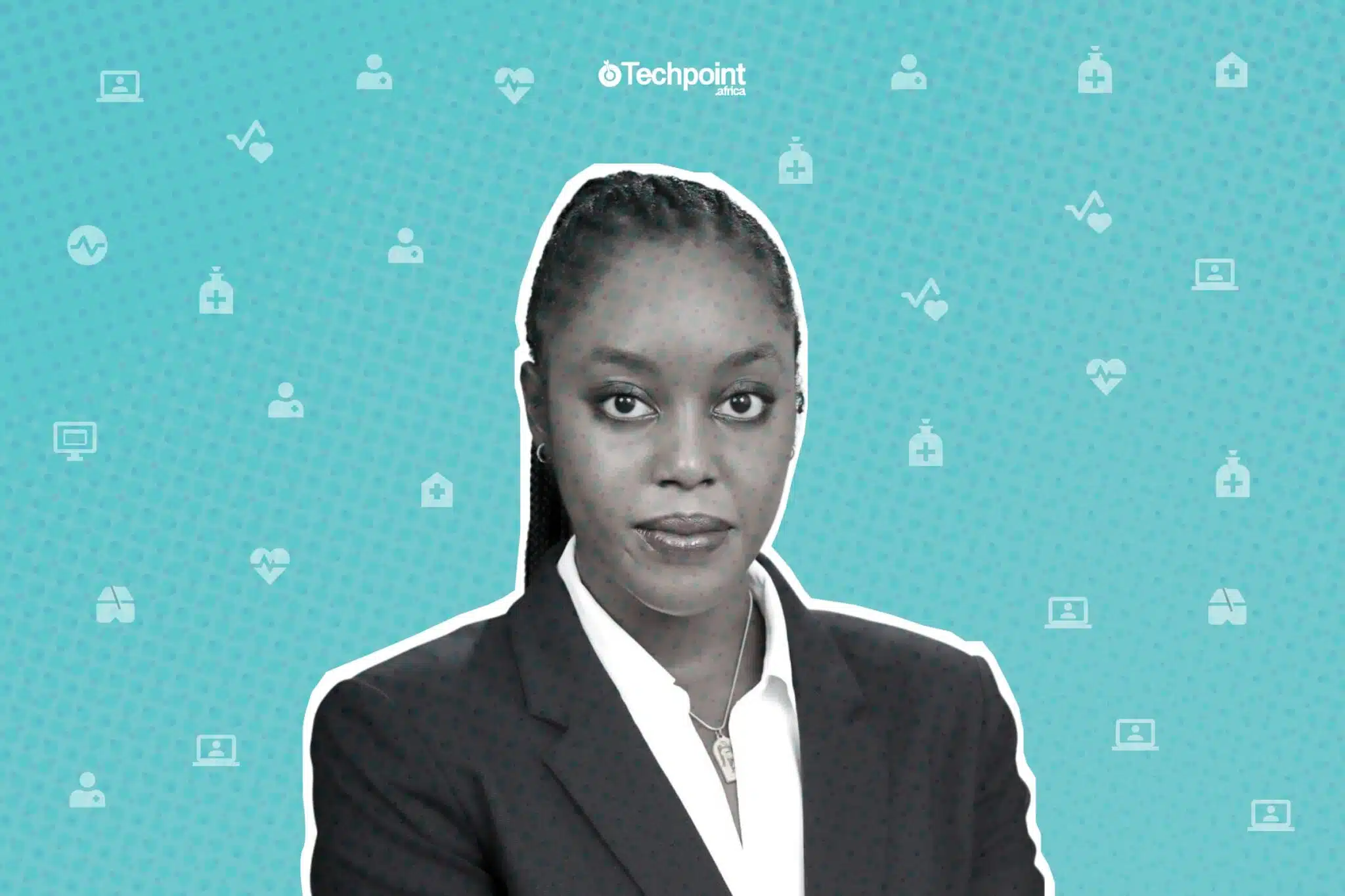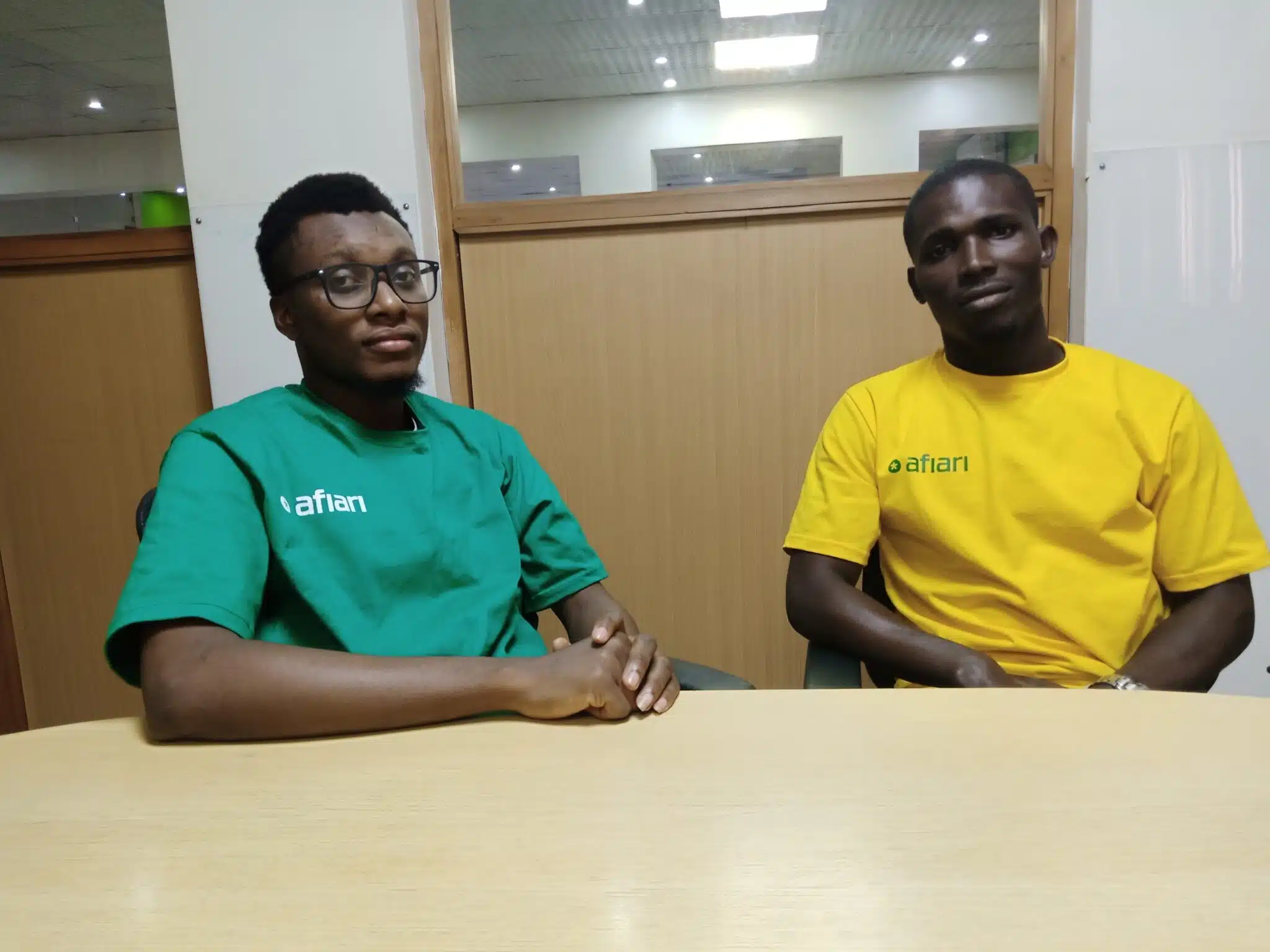While many kids dream of starting businesses, Margaret Ntambi always knew she wanted to invest in them. The daughter of Ugandan academics, her early path seemed set: a degree in nutritional sciences and a career in medicine or research, like her father. But a university trip to Uganda — part of a global health programme run by her father — shifted her perspective.
“We were there to observe nutritional deficiencies that people in rural communities were facing and obviously come up with interventions to help improve their health,” she told Techpoint Africa over a call. “What became really clear was that there was a lack of prosperity in these communities, and what I saw as progress would be investing in their economic development.”
That insight prompted her to pivot to finance, eventually graduating with a business degree from the University of Wisconsin–Madison and starting her career at Procter & Gamble. Today, Ntambi combines her interests in writing, research, and investing as a partner at Velocity Digital, where she focuses on Africa’s emerging technology ecosystem.
In this conversation, she unpacks the promise of femtech on the continent, explains where she sees the biggest investment opportunities, and shares how founders can better position themselves to raise capital and scale impact.
This interview has been edited for length and clarity.
How do you define femtech, and what made you see its investment potential?
A simplified definition of femtech is technology and tech-enabled solutions that focus on women’s issues, typically issues related to women’s health, and so what’s important to understand around the conversation around femtech, especially in Africa, is that it’s not just about health. Actually, fixing women’s health issues improves African economies.
When I started Sati, my co-founder, Ona Aliakai, who’s also Ugandan, and I looked at many sectors. However, when we decided to focus on writing about femtech, there seemed to be a lot of conversation on Twitter and LinkedIn about femtech in Africa.
We decided to dig deeper into what content was out there that actually supported investors and founders and understood what types of solutions would drive venture-scale returns. We couldn’t find much information on that, so we decided to write about it.
Our entire thesis is really focused on breaking down market opportunities in a way that is beneficial to both the founder and the investor. So getting very specific on the actual size of the market, how consumers actually participate in buying products and services in this market, and therefore, given those specifics, what business models will work to achieve venture-scale returns.
Obviously, we layer in different things like how concentrated the space already is. Therefore, if I’m an investor, this is the lay of the land; these are the types of business models I should be looking at; this is the concentration of deal activity, and therefore, this is where white space exists where I can get the biggest return on my investment.
Why are African women, despite their numbers and spending power, still underserved in femtech?
There are several reasons why I think that’s the case, and one thing I do want to bring up is that femtech is so important because most economies, including in Africa, have half of the population as women.
But the case for Africa is that African women only contribute 33% to our GDP, and therefore, if we focused on serving women and improving their health, we could increase Africa’s GDP by $316 billion or 10%, according to a McKinsey Global Institute report.
Now, I think the reason there aren’t as many femtech companies or the reason femtech companies might not be getting as much investment as other opportunities is that femtech might be considered a niche or more of an impact-driven sector versus a sector that can actually drive commercially scalable opportunities.
There’s a lot of demand in sectors like fintech, where it’s very obvious how you can leverage tech to democratise access at scale, using technology, so the use case is clear when it comes to fintech. For femtech, I think most investors might see it as niche or impact-driven versus a sector that can drive significant returns for limited partners.
How do you convince investors that femtech, often seen as impact-driven, can also deliver strong returns?
In our writing, we laid out the problem. African women face more health-related challenges than any other women in the world, and because of this, they aren’t contributing more to African economies.
If we supported improving their health, they could contribute more to the economy. What does that mean? Fewer women would die from giving birth, fewer would drop out of school due to period poverty, and more would be able to participate in the labour force, and so forth.
So, like you said, those are more impact-specific metrics that would improve African economies, but maybe that doesn’t translate into venture-scale returns.
Now, we’re going into venture-scale returns and why VCs should actually think about investing in femtech. The way that we broke down our writing is that we talked about all of the specific sectors that femtech health-related companies really focus on, which are menstrual health, maternal health, gynaecology, pelvic testing, oncology, etc.
And so what we did for the investor in our writing was break down how big each of these markets is. Menstrual health is a $4 billion market on the continent, while oncology, just for women, is a $52 billion market; when you include men, it’s a $90 billion market.
So it’s framing the market opportunity for the investor to understand that if we were to invest in a company in this space, how big is the market that they can capture? From there, we took it a layer deeper and said, “If you were to invest in a company working on these specific problems, what business model would be needed to enable them to scale?”
There are challenges for menstrual health because most people buy menstrual health products offline. Ninety-nine per cent of those pads are purchased offline. Therefore, if you are presented with a tech platform that’s doing B2C or D2C play around selling menstrual products, they’re not going to be able to capture much of that $4 billion market because 99% of that market is being captured offline.
So, it’s helping them decipher and determine where the opportunities lie. What we did, ultimately, for the investor, was showcase that there is white space and an opportunity for quick scalability really lies in the oncology sector.
And we explained why explicitly, and the value chain around how an oncology startup could play in all parts of the value chain. Because there is a low concentration of deals, this is an opportunity for you, the investor, to enter a great company early. Right now, there are only a few building in this space. Therefore, you can support a company in exiting quickly. So you can get the venture scale metrics that you need with a fast exit if you look specifically at this sector.
You’ve pointed to oncology as a space with real scale potential in Africa. What led you there, and what makes it stand out?
In part one of my article, when I’m focusing on oncology, I talk about the fact that there’s a lack of cervical cancer prevention, screening, and treatment. Most African women who contract human papillomavirus (HPV) or cervical cancer die because of the lack of access to appropriate prevention and care. And this is not only HPV, but cancer in general is a $52 billion market for women and a $90 billion market if you include men, and therefore, this is how a solution could be built.
Building an oncology solution in Africa could create network effects. A company could come in and improve diagnostics. They could leverage technology to improve pathology, treatment pathways, patient navigation through the hospital, etc.
So, if I am a hospital wanting to leverage a B2B AI oncology tool that helps me do these specific things, maybe right alongside this solution, there could be some embedded finance components that support the patient in getting access to insurance, paying their bills, etc.
There needs to be a whole value proposition around why the hospital would leverage this to improve patient outcomes and make money, because the hospital facility needs to make money off the patient. The third part showcased an example of a founder who has built something similar to this, is in several markets on the continent, and is in international markets as well.
They’ve been able to scale their solution, but they started in oncology and have expanded into a larger array of healthcare solutions for women and men.
I showcased that founder’s story because she’s from Uganda. She’s from Masaka and had a very rural and humble upbringing. She’s not a Harvard grad; she’s not a Stanford grad.
She is your everyday African girl who went to Makerere University, a local university in Uganda, and hustled herself to where she is now, where she has a health tech platform. She started out focusing on women’s health, specifically oncology, but has expanded her services into an entire ecosystem that serves a large customer base.
From your research and founder interviews, what common challenges do femtech startups in Africa face when trying to grow and scale?
If we’re speaking just in general, I would say the biggest challenge I’ve heard founders express is a lack of access to capital.
The biggest opportunity for our African founders is to learn how to tell stories and bridge the gaps that investors face when trying to understand their opportunities better. If you can come up with an appropriate pitch and an investment memo, all of the information that lays the land for the investor to understand the opportunity, capital will be unlocked faster.
You’ve pointed out that markets like Nigeria dominate menstrual health sales. How does this concentration impact startups in smaller markets?
In general, when you’re thinking about how to build a venture-scale company in Africa, you have to consider the tier one markets.
As you can see from VC funding, if you’re looking only at sub-Saharan Africa, the tier one markets are Nigeria, Kenya, and South Africa, because of the market size, population, GDP, and purchasing power.
Therefore, when you’re going to distribute to them, you don’t have to go outside of that market to deal with the fragmentation that’s involved with scaling internationally in Africa. If you focus on one of those markets, you can get a big enough piece of the pie to generate enough interest from investors without having to go to another market.
Now, if you’re a founder building in a tier two market – like Uganda or Tanzania – then you might have to explain your case as to why your solution is big enough just in Uganda to achieve venture scale returns; otherwise, you also need to talk about what your expansion plan is and why it’ll be viable.
Now, if you’re someone in Namibia building a menstrual health company, it’s not that you shouldn’t do it; you definitely should if that’s your passion. But maybe venture capital might not be the source of financing that you start with or try to get in the beginning, because the investor will be looking at it from that lens of market potential and having to scale to other markets potentially if Namibia is not big enough to showcase or generate venture-scale revenues.
Beyond the view that femtech is mostly impact-driven, what other misconceptions do investors often have about the sector?
One of the other misconceptions I have seen outside of the fact that maybe investors would see femtech as a niche or just impact-driven is the misconception that the cultural barriers women face would translate into low demand for solutions. Let me explain what I mean by that.
Obviously, women face many cultural barriers in Africa, whether it is having to get married early or not, depending on specific cultures. If you get married early, you tend to have children early, and therefore, you probably won’t be able to focus on your education, starting a business, going to university, or entering the job force.
So, there are cultural barriers in Africa that hinder women from contributing more. Now, this shouldn’t be confused with suppressed demand. Women want to get access to contraception. Women want to get access to screenings for their health.
They want to get access to menstrual products, but they’re navigating specific stigmas. They’re navigating issues with affordability. They’re navigating issues with availability. But if a solution can overcome these barriers, they’re unlocking massive latent demand from women who want to be served, but maybe cultural barriers hamper them from being served.
I do know that there are some femtech solutions that are focused on discretion, and they have specific ways to navigate these cultural barriers to unlock customers and then scale. So I think sometimes you might need to get creative around that.
An example of a successful femtech solution is Kasha, which has raised Series B financing and focuses exclusively on femtech. Starting in Rwanda, Kasha has since expanded to South Africa and several other markets.
But what makes them win is that they aren’t serving one sector. They are a B2B e-commerce platform, but for the most part, they only do B2B sales, which is key in this sector to unlock venture-scale returns.
The products that they have on their e-commerce platform go beyond just menstrual health products; they have things for STIs, oncology, etc. So they have a wide array of offerings that serve the full scope of femtech needs, and that’s why they’ve raised significant financing.
What lessons can anyone who wants to build a femtech solution in Africa take from other geographies?
Don’t over-index on D2C digital models. I think this is not news to anyone in Africa, but obviously in the US or Europe, D2C apps succeed because there is higher disposable income, there is wider insurance coverage, and there is more e-commerce penetration.
In Africa, that type of structure can’t be supported at scale just because of how our markets are. Selling directly to women without solving for affordability, distribution, trust channels, etc., isn’t going to work. So again, you need to focus on B2B plays. If you can embed your product into an employer, an insurer, an NGO, or a government, that’s how you can scale quickly and get distribution beyond just going directly to the consumer.
How can femtech founders effectively use stories in the fundraising process?
A founder could leverage the playbook I’ve put together for an investor, which would be, “Hey, if you invest in what I’m working on, it’s going to unlock this amount of GDP on the continent. For me, I’m going to be able to drive this amount of revenue at these specific margins because I have these specific partnerships, or I have this level of traction, or I have this domain expertise.”
Because at the end of the day, the investor cares about how you will de-risk their money to create specific outcomes. So if you can articulate the problem very well and how your solution solves it, and get them sold on the fact that you can confidently and competently use their money to build and scale it, that’s how you sell.
The challenge is understanding how to do it quickly and concisely so that there’s no room for misunderstanding or confusion. So, keep the points very succinct and direct, and sell them on you, but you need to showcase that you understand the opportunity very well. Therefore, if you don’t invest in me, you’re going to have FOMO and regret it. You have to say that subtly without using those last two words, but they have to kind of feel that energy.











